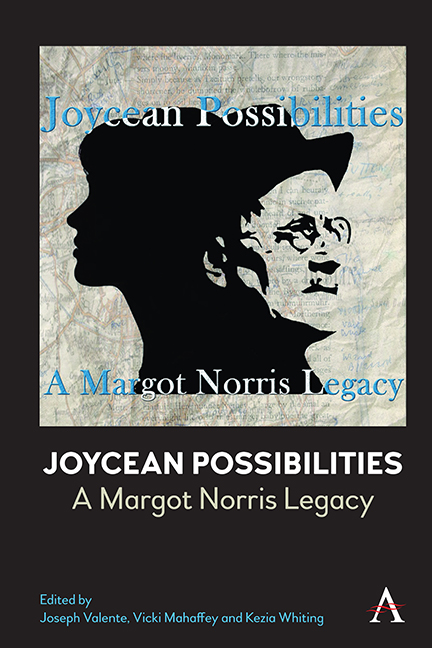l - Defining a Generation in Joyce
Published online by Cambridge University Press: 20 April 2024
Summary
Margot Norris has defined a generation in Joyce studies in at least two senses of the term. She has been, for upward of four decades, an exemplary voice on Joyce's oeuvre, the ideal reader of our title. Invited to keynote more Joyce conferences than anyone in the history of the field, and by a wide margin, Margot Norris has combined preeminence as a theoretician, an exegete, and a historical critic of all things Joyce. She has anchored what has come to be known as the “Joyce industry” like no other figure since the heyday of Hugh Kenner. But she has also defined a generation of Joyce studies in the sense of delineating the outline or form of our collective project, of simultaneously marking and pushing the boundaries of the field in all directions. No approach to Joyce's work has been foreign to Norris’ imagination or intractable to her powerfully prehensile intellect. To trace her career, accordingly, from the mid-1970s to recent times, is to follow the march of our investment in and engagement with Joyce's literary creation and its critical heritage—not that she has followed the prevailing footsteps, but that she has led the parade.
Appearing two years before Colin McCabe's James Joyce and the Revolution of the Word, widely credited with initiating the post-structuralist turn in Joyce studies, Margot Norris’ The Decentered Universe of Finnegans Wake had already executed that paradigm shift with respect to Joyce's most challenging, experimental opus, a foray beyond not only the avant-garde bourne of modernism, but beyond the pale of a postmodernism yet to be born. In her own words, Joyce's last work assaulted “not only the conventional literary modes but also many of the epistemological presuppositions of our culture.” Its means for accomplishing this radical demarché, on Norris’ account, is to enact a narrative anatomy of the infrastructure of language as such, in which our “empirical belief in the separation of inner and outer, subjective and objective, mental and physical—completely disintegrates.” By casting this Wakean “colliderscape,” an environment where human characters are periodically “melting into their landscape to become river and land, tree and stone,” Norris not only captures Joyce's disruption of the logic of identity at its most cosmic, but anticipates today's ecocritical indictment of the Enlightenment construction of the Anthropocene.
- Type
- Chapter
- Information
- Joycean PossibilitiesA Margot Norris Legacy, pp. 3 - 12Publisher: Anthem PressPrint publication year: 2022

